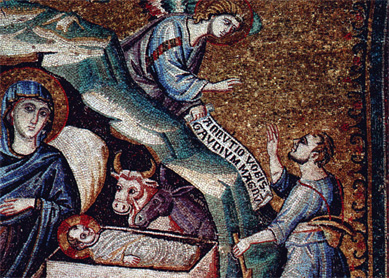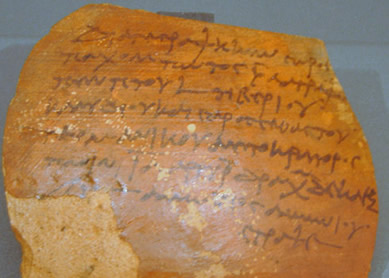The Infancy Gospel of Thomas is a loose collection of childhood stories about Jesus. It “fills in gaps” in the gospels of the New Testament, which mostly skip over the growing-up years of Jesus. In the New Testament, only the Gospel of Luke includes a childhood story, featuring the twelve-year-old Jesus and his parents (
Scholars generally assign the Infancy Gospel of Thomas a late second- or early third-century date. The original language is Greek. The attribution to “Thomas,” a disciple remembered by Christians as “Doubting Thomas” (see
Did you know…?
- The Infancy Gospel of Thomas contains childhood stories about Jesus.
- The gospels of the New Testament include only a single childhood story about Jesus.
- The Infancy Gospel of Thomas is not the same as the Coptic Gospel of Thomas.
- The child Jesus blesses and curses, heals and harms, in the Infancy Gospel of Thomas.
- Mary and Joseph are often confused by Jesus’s actions in the Infancy Gospel of Thomas.
- The Infancy Gospel of Thomas has inspired artwork and film.
Is Jesus a good kid in the Infancy Gospel of Thomas?
Yes and no. The young Jesus blesses and curses. At the age of five Jesus performs a playful miracle, turning toy birds into real ones that fly away. On the same day, Jesus curses a boy who drains a pool of water that Jesus had created. Remaining chapters of the Infancy Gospel of Thomas follow the same pattern. In one episode, Jesus causes adult members of his village to go blind; later, he restores the sight of all he had cursed. Three “schoolhouse” stories form the spine of the Infancy Gospel of Thomas. Jesus baffles one teacher with a lofty speech on the letter alpha. He curses the second teacher, who promptly keels over. In the third account, the tutor lavishes praise on his pupil. No harm comes to the third teacher.
Jesus’s good and bad sides are likewise apparent in his own small household, which in the Infancy Gospel of Thomas, includes his parents, Mary and Joseph, and at least one sibling, James. When Joseph tries to correct Jesus’s behavior, Jesus snaps at him. When a poisonous snake bites James, Jesus saves his life. The Infancy Gospel of Thomas concludes with a version of a childhood story found in the Gospel of Luke. In it Mary and Joseph lose track of the twelve-year-old Jesus. They conduct a search, and, three days later, they find him at the temple, explaining things to adults like a boss. Mary and Joseph, meanwhile, remain puzzled.
Why does the Infancy Gospel of Thomas matter?
One compelling reason is its persistent appeal across the centuries. Evidence can be found in medieval ecclesial artwork. Scenes from the Infancy Gospel of Thomas were cut into tiles for a fourteenth-century English church, and a rendering of “Jesus and the birds” decorates the ceiling of the twelfth-century Saint Martin’s Church in Switzerland. Contemporary echoes of the Infancy Gospel of Thomas resonate in Anne Rice’s Christ the Lord: Out of Egypt (2005) and in the film, The Young Messiah (2016).
For biblical scholars, the mystery of the book’s origins and purpose remains the big question. Is the Infancy Gospel of Thomas a refinement of the biographical tradition of Jesus begun in the canonical gospels? Ancient biographies of great figures often include vignettes from childhood. Or is the Infancy Gospel of Thomas an ancient example of children’s literature? Some scholars suggest that the stories preserve the social memory of childhood experiences in Roman antiquity. Others argue that the Infancy Gospel of Thomas was a pious answer to unflattering questions about the background of Jesus.
No wonder the Infancy Gospel of Thomas has provoked such a wide range of responses. It’s rough around the edges, and the meaning of its stories is ambiguous. If readers are confused by its contents, they are in good company. Confusion is the consistent reaction that Jesus triggers in villagers and family members. Is this perhaps the point—that even the people who raise the strange child do not understand him? If so, the Infancy Gospel of Thomas is not an “infancy gospel,” after all, but a story about the struggles of family life. Let’s call it a family gospel.
Bibliography
- Davis, Stephen J. Christ Child: Cultural Memories of a Young Jesus. New Haven, CT: Yale University Press, 2013.
- Upson-Saia, Kristi. “Holy Child or Holy Terror? Understanding Jesus’ Anger in the Infancy Gospel of Thomas.” Church History 82 (2013): 1-39.
- Frilingos, Christopher A. Jesus, Mary, and Joseph: Family Trouble in the Infancy Gospels. Philadelphia: University of Pennsylvania Press, 2017.





